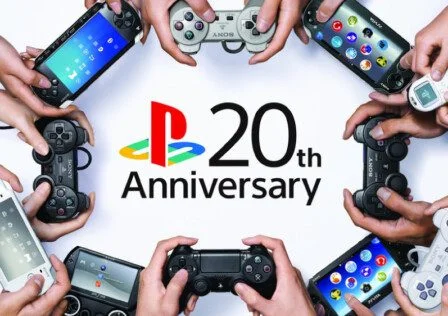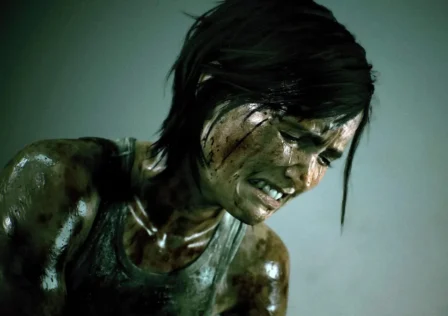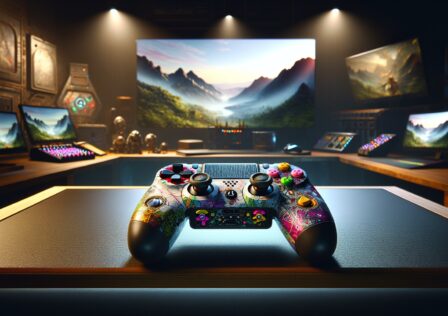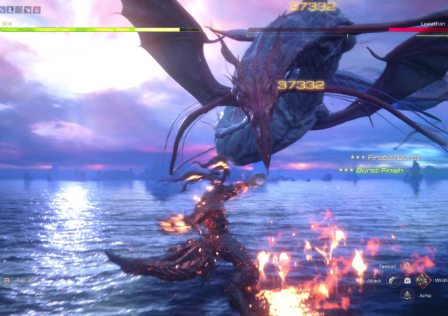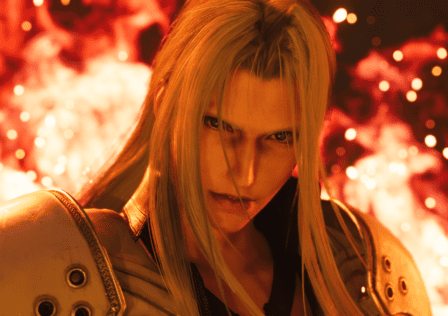While the staff here at Power Up Gaming are reluctant to celebrate the 20th anniversary of the original PlayStation in North America today (since it means facing up to our ages and the inevitable march towards death), it is still an important milestone. Sony’s PlayStation was the defining console of a generation, and was largely responsible for pushing video games into the mainstream and driving industry growth on an unprecedented scale. Since that nostalgic fever is still running high, Power Up Gaming would like to present this retrospective on Sony’s first foray into games consoles.
Development
In 1988, the video games marketplace was dominated by Nintendo, a company riding high on the success of their debut home console, the NES. Consumer electronics manufacturer Sony were newcomers to the gaming industry, but extremely eager for a piece of the action. After an unsuccessful foray into computing in the early ’80s, its development (along with partner Philips) of an extension to the CD-ROM format that allowed for compressed audio, video and data files to be accessed simultaneously seemed to have the makings of something more innovative.

As it happened, the creation of Sony and Philips’ CD-ROM XA format would coincide with Nintendo’s launch of a flawed floppy disk-based attachment for the Famicom (the NES’s Japanese counterpart), which ran into many typical magnetic disk issues, including a dire lack of durability and copy protection.
After having dealt with Sony previously – in having them manufacture the sound chip for the NES’s upcoming successor, the Super Nintendo – Nintendo turned to the company to develop a CD-ROM attachment for the SNES, which was by this point 18 months away from release. It had become clear to console manufacturers that CDs were the future of video games – due to them being much cheaper to produce than traditional cartridges, as well as offering consumers more interactive audio-visual experiences – and Nintendo wanted to stay ahead of the curve.
Although Sony had reservations about cheapening perceptions of their brand by producing what they saw as a toy, engineer Ken Kutaragi proved influential in convincing the company’s executives as to the potential profitability of entering the video games market.
While the company had mounting conflicts with development partner Philips over the next couple of years, which ultimately led to them going their separate ways, Sony’s relationship with Nintendo seemed to be perfectly harmonious. That was, until the Consumer Electronics Show of 1991. Sony took to the stage and announced that, in addition to producing the SNES CD-ROM add-on, they would also be releasing a standalone console that combined CD-ROMs and SNES cartridge compatibility, codenamed the Play Station (space intentional).
In the days leading up to the Play Station’s unveiling, Nintendo had got wind of Sony’s plans, and realised the contract they’d entered into was highly unfavourable to themselves. As a result, company president Hiroshi Yamauchi quickly, and secretly, cancelled all plans for the joint SNES CD attachment.

The day after Sony’s big CES announcement, Nintendo’s treachery became known to the world when chairman Howard Lincoln announced that the big N had instead opted to align itself with Philips, Sony’s once-bedfellow turned bitter rival. Although negotiations between Nintendo and Sony continued for some time afterwards over the Play Station, Sony president Norio Ohga was furious over Nintendo’s deal-breaking actions, and soon green-lit Kutaragi’s proposal to develop their own video games console. Sony would soon be placing themselves in direct competition with Nintendo.
By 1993, Sony had drawn up firm plans for its system, now dubbed the PlayStation-X (PSX). Kutaragi had pushed for a strong emphasis on hardware and processing power, rather than providing concessions to what he saw as the gimmicky multimedia experience many new consoles of the time – such as the 3DO and CD-i – had opted for.
Indeed, Kutaragi’s engineering skills proved integral in designing custom hardware for the PlayStation (the X being dropped before its release) that allowed it to be an affordable, 3D powerhouse, with its graphics rivalling computers that cost thousands of dollars. Conjecture suggests that the key turning point in Sony’s switch from a focus on 2D games for the PlayStation to those in 3D was the release and success of Sega’s Virtua Fighter in the arcades.
Developing cutting-edge hardware was only half the battle, though. Being relatively inexperienced in the gaming industry, Sony needed to secure strong software development partners for the PlayStation; lest it end up like the 3DO or Atari Jaguar, both of which had lacklustre third-party support and subsequently, weak games libraries.

With this in mind, Sony spent much of 1993 and 1994 setting up relationships with game developers and publishers, securing over 250 relationships in Japan alone. Notable partners included Namco and Konami, whose games would allow the PlayStation to compete with Sega’s popular arcade games and home console ports.
One of their riskier acquisitions was the $48 million purchase of Liverpool-based gaming studio Psygnosis, a relative unknown in the grand scheme of things. However, the studio soon became the centre of Sony’s in-house software development, and its experience in specialist hardware also allowed it to create affordable development systems for the PlayStation.
Launch
By the time of its Japanese launch on December 3, 1994, hype for the system was in overdrive. Having being teased by stunning 3D arcade games, consumer appetite was strong for a next-generation, 3D-focused home console. With the Nintendo’s SNES successor, the N64, being nearly two years away from release, Sony were well-equipped to take advantage. Not only that, but they were also aided by the failings of their other major rival.
Over the previous few months, Sega had generated considerable bad will with their abortive campaign to simultaneously release both a 32-bit add-on for the Mega Drive, the 32X, and their next generation console, the Saturn. Although it initially performed strongly in head-to-head sales against the PlayStation, the Saturn soon faltered. Developers, consumers and retailers alike all became disillusioned with Sega, who had quickly abandoned the 32X merely months after its release. All concerned felt stung by investing in the console, and were hesitant to transition to the Saturn lest it suffer the same fate.

Sega’s loss was certainly Sony’s gain, with its sleek (in comparison to the Saturn, at least) and powerful PlayStation console steadily increasing in sales ahead of its North American launch on September 9, 1995.
At the debut Electronic Entertainment Expo (E3) in May 1995, Sony really proved itself as a force to be reckoned with in the US. As well as a tremendously strong booth – showcasing titles such as Tekken, Wipeout and Ridge Racer – the announcement by head of SCE America, Steve Race, that the PlayStation would retail for $299 ($100 less than the Saturn) was met with widespread acclaim.
The strong third-party developer support Sony had worked so tirelessly to secure meant that the console had an extremely strong launch lineup in the US, which included the likes of Battle Arena Toshinden, Warhawk, Air Combat, Philosoma, Ridge Racer and Rayman. This promising library, coupled with the system’s relatively low price tag, meant consumers quickly took to the PS1. By the end of the year, it had sold 800,000 units, compared to the Saturn’s 400,000. From then on, Sega were left forever in Sony’s shadow as a console manufacturer.
Competition
With the Atari Jaguar, 3DO and Amiga CD32 systems all providing little competition to the PlayStation, not to mention Sega’s aforementioned issues with the Saturn after an initially strong showing, it looked like only Nintendo would be able to challenge Sony’s dominance.
With the PlayStation having a head start on the SNES’s successor, Sony’s now bitter rival elected to delay their own foray into the 3D gaming market until 1996, using the extra time to create a technically superior machine.

However, eyebrows were raised when the Nintendo 64 (originally codenamed the Ultra 64) was revealed as having a cartridge slot rather than an optical drive. In an interview with GamePro, Nintendo’s vice president of marketing, Peter Main, stated the rationale for the use of cartridges was the speed advantage they had over CDs. Whilst true to an extent, the cartridge medium had many drawbacks of its own, the most notable of which was storage limitations.
While the Nintendo 64 played host to a number of stellar first- and second-party titles including Super Mario 64, GoldenEye 007, The Legend of Zelda: Ocarina of Time and Perfect Dark, its third-party offerings on the whole failed to match the quality of the PS1’s. Developers such as Square, who had previously supported Nintendo, were put off by the N64’s cartridge system, and Sony benefitted as a result.
Wile the Nintendo 64 is still highly regarded by gamers to this day, the PlayStation went on to sell three times as many units as it, with Sony’s superior developer support and CD technology ultimately giving it the edge.
Games Library
With an impressive total of 7,948 games released worldwide over the course of its lifespan, the PlayStation had the strongest games library of the generation. Launch games such as Battle Arena Toshiden and Ridge Racer exemplified the 3D processing power of the PlayStation and served to attract those disenfranchised developers who felt let down by Sega, and limited by Nintendo’s reliance on cartridges. The console launched in Europe with an impressive lineup, featuring Air Combat, Battle Arena Toshinden, NBA Jam Tournament Edition, Power Serve Tennis, Rayman, Ridge Racer, Street Fighter: The Movie, The Raiden Project, Total Eclipse Turbo, and Zero Divide.

Starting off strong was one thing, but the PlayStation managed to gain more momentum as the console generation wore on. Titles such as Resident Evil caused a huge impact in the survival horror genre, and inspired a generation of game designers to turn to zombies as their default monster of choice.
At the same time, Sony’s partnerships with Western developers started to create console development scenes outside of Japan for the first time. Their investment in Psygnosis really started to pay dividends when the studio produced Wipeout. Wipeout brought futuristic racing to the club-scene generation by mashing progressive visuals with electronic music supplied by the likes of The Chemical Brothers and Orbital.
Meanwhile, Tomb Raider, while multi-platform to begin with, quickly became synonymous with the PlayStation. Sony made the move to tie up Derby-based developers Core Design and publisher Eidos into an exclusivity agreement for Tomb Raider II and III. With the likes of Lara Croft making the cover of FHM, it seemed that video games were no longer the domain of Japanese developers, and were finally throwing off the kid-friendly image they’d long been associated with. This really helped the PlayStation brand to establish an edge over the competition in those early years.

While these more adult titles were hitting the console in droves, the PlayStation proved it could still pull in more conventional games. Final Fantasy VII made a massive splash on the console for a traditional RPG. Child-friendly platformers also made the switch to 3D, with the likes of Crash Bandicoot and Spyro The Dragon being released to strong critical and sales performances. This kind of diversity meant that Sony were courting younger and older players alike, thus giving the PlayStation a universal appeal.
As the console matured towards the end of its cycle, so did the games. Titles such as Metal Gear Solid told a deeper narrative (despite having characters with names like Solid Snake), while Silent Hill laid the foundation for the psychological horror that the series is known for. Meanwhile, on the other end of the spectrum, Gran Turismo offered players a realistic driving experience. It seemed like the PlayStation was the home of innovation, whether that be new genres like PaRappa The Rapper’s rhythm action, or imaginative worlds as expressed through the likes of Abe’s Odyssey. The games were what mattered, and the PlayStation had them in spades.
Piracy
While the PS1’s CD-ROM format offered more storage space than a cartridge, there were downsides that concerned developers. The rise of CD burners in desktop PCs brought with it the risk that games could be pirated. While Sony attempted to get around this by using a special four character code written into the ‘lead-in’ track of their discs (and also a black coating so that customers could tell that they were genuine discs), soon enough, pirates managed to get around this copy protection with a modchip. This chip was easy to install for anyone who had access to a soldering iron, and this process was known in many territories as “chipping” the console. In fact, many people bought the console specifically to chip it and get cheap access to the PlayStation’s extensive back catalogue.
Console Redesign
As the fifth generation of video games came to a close, Sony noticed that, despite the announcement of the PlayStation 2 and the release of Sega’s Dreamcast, there was still significant market interest in the original PlayStation. To capitalise on this, and to give those consumers who probably couldn’t afford the PS2 an affordable entry point, Sony redesigned the PlayStation and released the PSone.

With its neat curvature and a combo pack which included an LCD screen, the PSone initially proved to be very popular. Upon its release in 2000, the PSone outsold every other console that year (including the PS2), and went on to sell over 28 million units until it was discontinued in 2006. This gave the console a new lease of life, meaning that games were still being released for the platform long into the next generation.
Legacy
Having entered the industry as a relative underdog to Nintendo and Sega, the PlayStation managed to decisively outsell its competitors over the course of a generation. By the time it was discontinued in 2006, the console had sold 102 million units.
The console’s popularity set Sony up with a large install base, and a lot of recognition for the PlayStation brand. As such, the PS2 went on to become the best-selling console of all time, and developers who had jumped on the PlayStation bandwagon carried their support through to the next generation. The variety and quantity of new titles went a long way to establishing Sony as a console manufacturer.
While Sony didn’t quite achieve the same level of developer support with the PS3, they seem to be putting that right by attracting independent and triple-A studios alike to the PlayStation 4. Their current approach is heavily influenced by the way they did business back in the PS1 days: by courting developers, listening to their criticisms, and offering them a flexible platform with plenty of support. If this approach continues, there’s no reason why the PS4 can’t succeed in the same way that game-changing grey box did 20 years ago.

